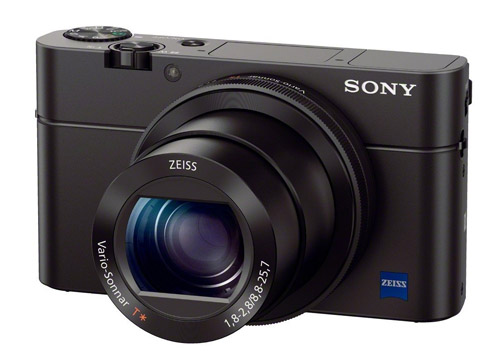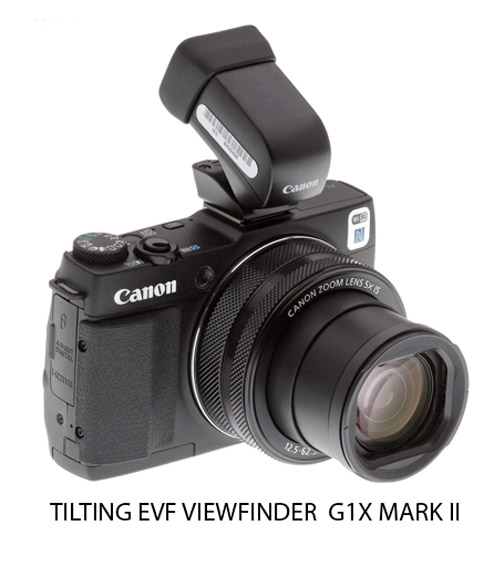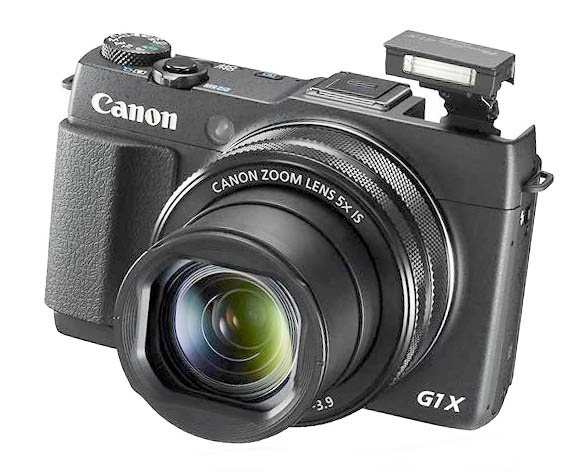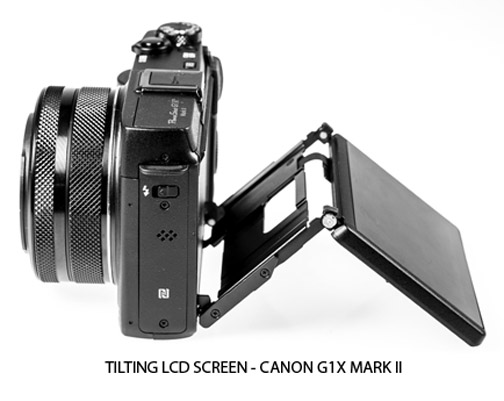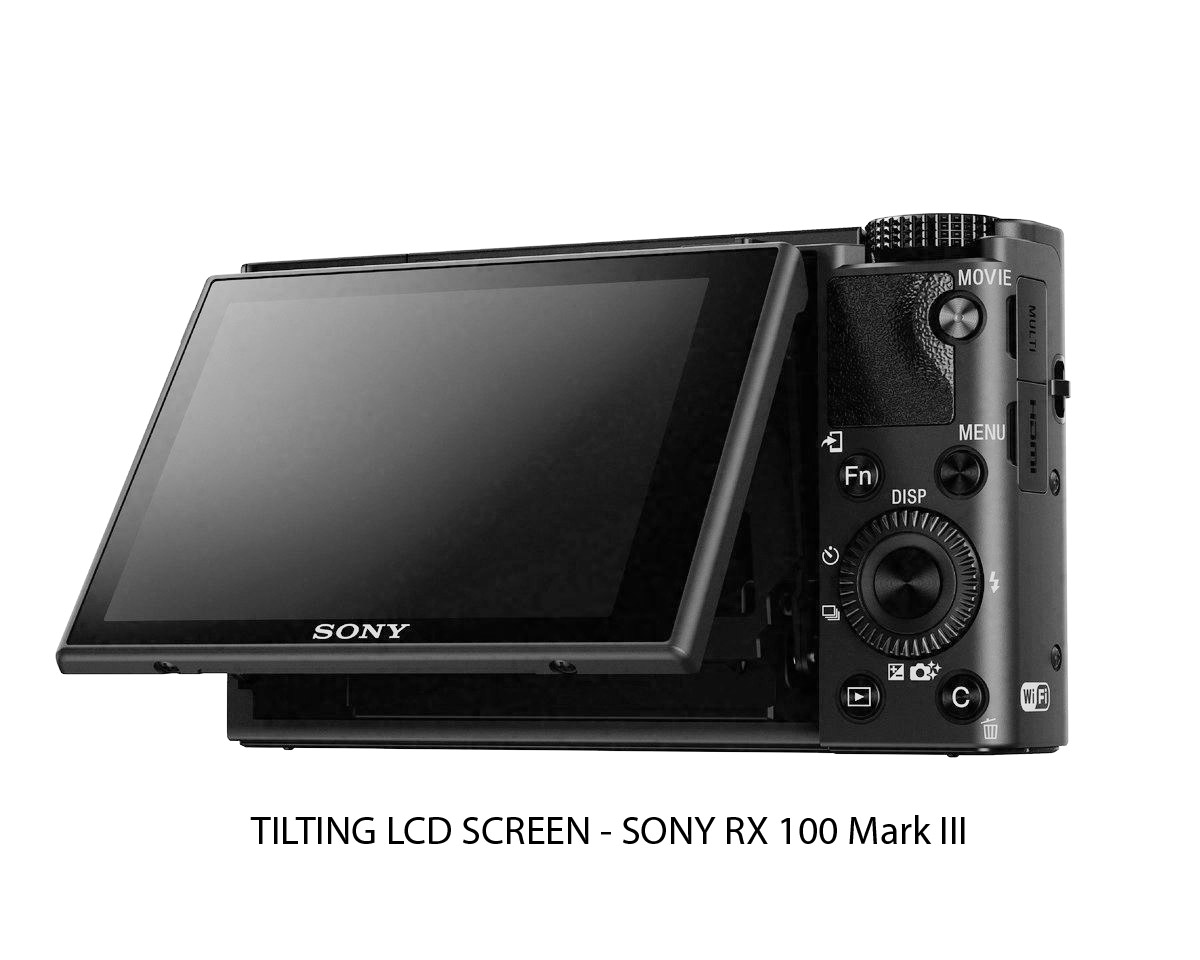RX100 III Vs G1X Mark II
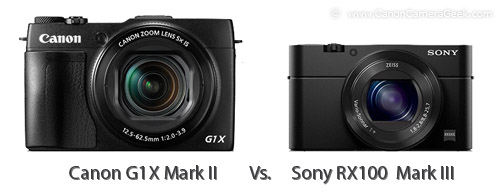
WRITTEN BY: BRUCE LOVELACE
UPDATED: October 22 2025
The RX100 III Vs G1X Mark II comparison.
It's another one of those epic battles. This one features a Sony vs a Canon. Shocking, once purchased, each buyer argues in favor of their own choice for which one they chose. But, that;s human nature, justifying your decision.
Canon loyalists will brag about the size of the sensor and the longer zoom range of the Canon G1X Mark II lens. The Sony fans will counter with the Sony RX100 Mark III's built-in viewfinder, its smaller size and superior video capabilities.
No doubt, the smaller size of the Sony RX100 Mark III is its biggest selling point. It really can slip into a pocket for easily carrying it securely without worry of it dropping out of a purse or waist-level pouch.
The edge it has in video capabilities would be important if you use it primarily for video, but with the Canon G1X Mark II the video quality you get from the big sensor is excellent too.
Secondly, the convenience of a pop-up electronic viewfinder is a big plus in my opinion. You get a much clearer view of your subject when using a viewfinder versus using the LCD to compose your photo, especially when shooting outdoors in the sun! The viewfinder stores easily away when not in use and keeps the size of the camera small. This tips the RX100 III vs G1X Mark II scale toward the Sony.
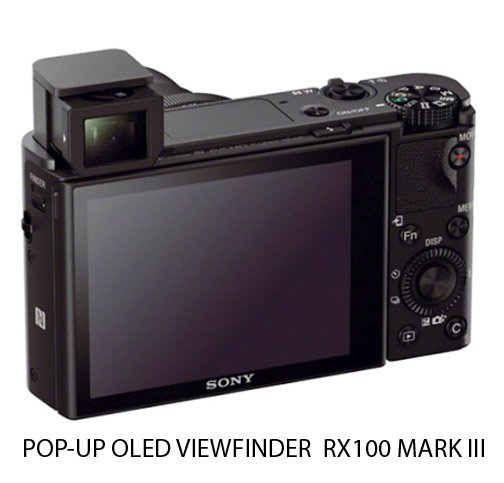 The Pop-up viewfinder is easy to engage.
The Pop-up viewfinder is easy to engage.Like the G1X Mark II viewfinder it has an eye sensor to automatically switch between the LCD screen and the viewfinder. I have to have an optical or electronic viewfinder in every camera I use because......
I hate taking photos by using an LCD screen
That's my own personal bias, but for me, it's very very important. Sure I've taken plenty of photos with my smartphone and they've all been taken by using the touch screen.
The tilting EVF viewfinder is really cool to use, although it adds size to the camera. I often use it in a tilted position like the photo above shows.
I've use the tilt screen on my G1X Mark II, tilting it downward while holding the camera high above my head. It's just a better situation to compose a photograph while look through a nice bright viewfinder.
The biggest selling point for the Canon G1X Mark II is its sensor. Sensor size is the biggest factor in image quality across the board, and particularly true at higher ISO settings. This is the most important consideration for me in the RX100 III vs G1X Mark II.
because I prefer natural lighting (higher ISO settings often needed) to the harsh shadows and wimpy output that built-in flashes provide.
When I do use flash I use my Canon 270 EX II Speedlite on the G1X Mark II hot shoe, which is sorely lacking on the RX100 Mark III. The 270EX II is small enough, powerful enough for snap shots, and it has the ability to produce bounce lighting.
Many point and shoot photographers will not be as enamored with the extra zoom power and lower aperture capabilities of the G1X Mark II, but I like the superior Bokeh you get with the G1X Mark II lens.
The Sony zooms from 24-70. The Canon zooms from 24-120. That's almost twice as close as the Sony.

RX100 III Vs G1X Mark II Size Comparison
The RX100 III wins this battle if you are looking for a camera that is truly pocket-able. It is smaller, thinner, and lighter than the G1X Mark II. In defense of the G1X Mark II, it is pocket-able if you have very big pockets.
The Canon Powershot G1X Mark II is about 15% taller and about 30% longer. The big difference is the thickness. The G1X Mark II lens is made bigger to cover the bigger sensor of the Canon.
The G1x Mark II is about 60% thicker, front to back, mostly due to the thicker lens, its bigger coverage area and longer zoom range. The Sony RX100 Mark III weighs a little more than half as much as the G1X Mark II.
LCD Screen Comparison - G1X M2 Vs RX 100 M3
LCD screens are an important feature of every digital camera because they are used so much during the picture taking and viewing process. Both of these cameras allow you to rotate the screens upward 180 degrees for taking selfie photos, a frequent occurrence in today's society.
The Canon also lets you tilt the camera downward because of its double hinge. That's an advantage when you want to shoot with your camera in an elevated position above your head to get a different perspective in your shot.
I often like to raise the camera above my head and shoot downward to get more interesting perspective. With the Canon it's easy to do. With the Sony, you can't use the LCD screen or viewfinder to properly compose your photo.
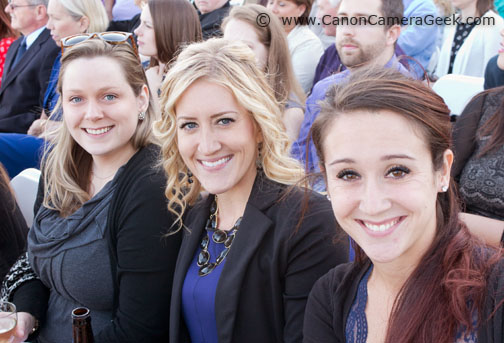 G1X Mark II Portrait
G1X Mark II PortraitEyes become accentuated in portraits when the camera is held above your subjects and tilted downward, even if only slightly. This photo of these three beautiful girls was taken using the G1X Mark II with the LCD screen tilted downward.
Sony RX100 III Vs Canon G1X Mark II Price Comparison
The price comparison of the Canon and the Sony does not create enough differentiation to make a decision on whch camera is right for you unless you consider the added cost of the separate EVF viewfinder for the Canon G1X Mark II.
Both of these cameras were significant improvements over their perspective earlier versions.
The addition of the pop-up electronic viewfinder was game changing for the RX100 and the both lens re-design and the addition of the tilting electronic viewfinder on the Canon were just as significant.
sites, but usually you can only get a few scattered opinions on a specific feature of a camera. That''s why I like to go to sources where there is a big collection of opinions all in one place.
Compare reviews of the Rx 100 Mark III and G1X Mark II cameras by buyers on Amazon:
As an Amazon affiliate Canon Camera Geek receives a small commission from qualifying purchases, at NO added cost to you.
The RX100 III vs G1X Mark II battle is a hot topic in many of the forums on digital photography
Keep shooting, keep learning, keep improving. Have a blast-Shoot a Canon


Bruce Lovelace is the publisher of Canon Camera Geek. Read more about him on the About Page. He also publishes how to articles and camera gear reviews at the Photography Tips website.
View some of Bruce's photos on Instagram and Flickr. Join the tribe of followers on YouTube. Bruce also runs photo workshops and provides 1 on 1 digital photography coaching.
Search for articles on this Site:
Recent Articles
-
Canon G1x Mark II vs G1X-Side By Side Comparison of Canon G1X Cameras
Oct 22, 25 08:35 AM
G1 X Mark II vs. G1 X: Is the New Version a HUGE Leap... Or a Massive Mistake? Canon responded to the criticisms of the original G1X. Canon G1X Mark II vs G1X -
Sony RX100 III vs G1x Mark II by Canon. Side by Side Comparison
Oct 22, 25 08:07 AM
It's another one of those epic camera battles, this time not the Canon vs Nikon but rather the RX100 III Vs G1X Mark II battle. -
Canon R6 Mark II FAQ. Answers To All of Your Canon R6 M2 Questions
Sep 01, 25 07:51 AM
There's a lot you can easily learn about Canon's mirrorless R6 Mark II camera. Get your questions answered in this R6 Mark II FAQ
This page may contain affiliate links that pay me a small commission. There is no cost to you. Review the affiliate statement at the very bottom of this page if you want more information.
